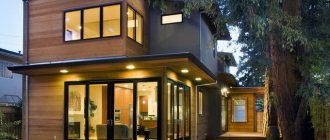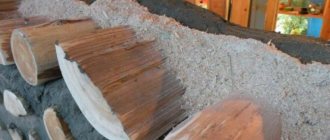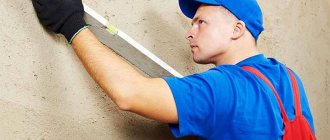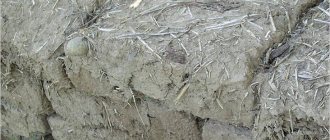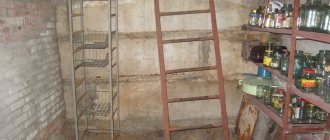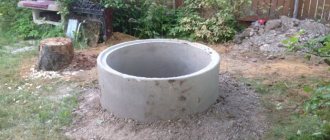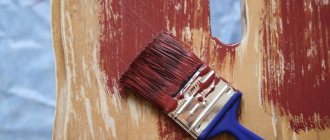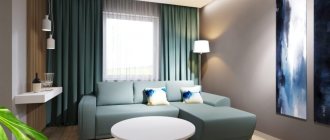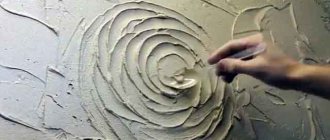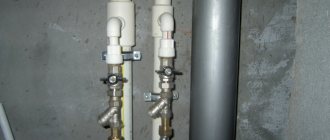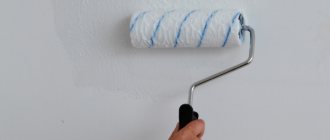Plastering on adobe, how to plaster adobe, technology
Plastering on adobe, how to plaster adobe, how to prepare an adobe wall for plastering.
Adobe, or as they are also called, adobe houses, are quite common in the southern latitudes of our country.
Since clay is a fairly cheap building material that lies right under your feet.
In addition, clay buildings are practical and convenient. Adobe buildings are the most environmentally friendly buildings in the world. Houses made of adobe retain heat well in the cold season. And on hot days, they delight the owners with coolness and freshness.
As a result of this, clay, as a basis for the construction of residential premises, was and remains a fairly common building material.
It is clear that this technology will not solve the housing problem on a planetary scale. However, it was and remains the basic basis of all modern technologies.
Because clay was the first building material that allowed humanity to build its own, comfortable housing.
The adobe houses basically consist of a single-layer, fairly wide wall. To improve technology and increase performance properties, the following can be added to adobe:
- Brushwood;
- Straw;
- Reed;
- Manure and so on.
Any additive reduces the negative property of adobe - loss of geometry when the wall is waterlogged. Today we will look at issues related to the finishing of adobe buildings. Let's find out which plaster on adobe will help maintain the microclimate in the room and extend the life of the building.
Checking blocks for suitability for construction
Completely dried blocks are pre-tested. To do this, take a brick and throw it from a height of human height. A self-made block should not crack.
Also, one of the bricks is specially broken in half and the cut is carefully examined. The block material suitable for the construction of walls must be absolutely uniform both in composition and color.
Reasons for the destruction of an adobe house
The first and main thing that should not be allowed, and which causes adobe houses to quickly collapse, is the presence of moisture.
In order to ensure the durability of an adobe house, it is necessary to protect it from moisture. But clay has an excellent capillary effect.
That is, a phenomenon in which liquid is able to circulate through capillaries in porous materials.
Human waste products contain large amounts of moisture at elevated temperatures.
We heat the room, but at the same time we cook food, heat water for our needs, wash ourselves, and so on.
Increased humidity and temperature increase the partial pressure inside the house. Naturally, moisture, in the form of steam, penetrates and is absorbed into the wall. A zone is formed in the wall where steam is converted into liquid.
Of course, some of the steam comes to the surface and evaporates. But, the bulk of the liquid remains inside the walls. This creates a zone of severe waterlogging.
On the one hand, this cycle is the basis for the formation of a positive microclimate in the premises of adobe houses.
On the other hand, an excess of moisture leads to dampness inside the room. And the adobe walls settle and begin to collapse, that is, they are about to break.
Protection methods
Adobe houses should be protected from excess moisture during the construction stage. First of all, take care of protecting the walls from groundwater, precipitation, and so on.
That is, an adobe house must be on a stone foundation, with a plinth, and with all the methods of modern waterproofing of the base of the building.
The next step is to protect the walls from precipitation using a large roof overhang. The ultimate goal is to minimize the contact of adobe walls with moisture outside the building.
Inside the building you should:
- Maintain a temperature not lower than plus sixteen degrees Celsius.
- Provide good ventilation in rooms with high humidity. For example, in the kitchen and bathroom. Install the hood above the stove and so on.
The ultimate goal is to maintain optimal, comfortable air humidity and prevent dampness in the room.
Finishing of adobe houses
In modern conditions, it is possible to increase the protection of adobe buildings without losing the environmental properties of the material. The simplest way to finish adobe buildings is plastering with clay mortar and whitewashing with quicklime.
This is what they did back in the days of our grandfathers. However, in the modern world, new technologies have appeared that make it possible to give the building a more modern look. In addition, annual whitewashing is not the best option for maintaining the building.
Exterior decoration of the house
Effective, vapor-permeable insulation materials are used for exterior finishing. This could be a modern, ventilated façade that will protect the outside walls from frost and excess moisture.
And at the same time, it will allow the walls to “breathe” and, thereby, remove excess moisture from the wall itself.
Ventilated facades include the external finishing of the house with clinker tiles or facing bricks. Also, adobe houses can be faced with plastic or wooden panels.
The finishing of the building is carried out with a mandatory gap, allowing air to circulate freely. This eliminates the possibility of condensation and moisture accumulating on walls and finishing surfaces.
Interior decoration of the house
It doesn’t matter what technology was used to build the adobe house:
- Adobe blocks;
- Monolithic, adobe wall, erected using formwork.
The walls will always work the same way. If the ultimate goal of your construction or renovation is to preserve the natural regulation of the microclimate. For the micro cycle of adobe buildings to work.
That is, the interior decoration of the house should have the same properties as adobe.
Environmentally friendly interior finishes that do not disturb the indoor microclimate include:
- Chalk painting;
- Lime paint;
- Adhesive painting;
- Wax coating;
- Clay plaster;
- Paper wallpaper;
- Fabric wallpaper and so on.
Not recommended
For interior decoration, it is not recommended to cover adobe walls with plasterboard or clapboard. When interior walls are finished with plasterboard or clapboard, a gap is formed between the wall and the finish.
The air gap is additional thermal insulation. In this case, the condensation zone of the adobe wall will immediately move closer to the inner surface.
The air circulation in the room is noticeably disrupted and the humidity of the wall increases. At the same time, the walls warm up worse and almost never dry out.
Therefore, you cannot use interior wall finishing that would create a gap. It’s another matter when the lining or drywall is attached directly to the wall, without an air gap.
In this case, air circulation is not disturbed, the adobe will dry out normally. This will improve humidity regulation.
Of course, only in the case when the lining is not coated on the outside with varnish or other material that covers the capillaries.
However, those who are familiar with adobe houses know how difficult it is to obtain adobe walls with ideal geometry.
After all, for such finishing you need fairly smooth walls that allow you to apply the finishing material without gaps.
Plastering on adobe, how to prepare an adobe wall for plastering
If you need to plaster adobe walls, it is recommended to prepare the walls first. It should be noted right away that cement-based plaster is not applied to adobe walls.
For this, mixtures based on lime or clay mortar are best suited. First, it is recommended to fill the walls with plaster mesh or shingles.
The process of plastering on adobe can be divided into several stages:
- Leveling the walls using a solution of clay and straw;
- Drying the walls;
- Stuffing plaster mesh, reinforced mesh or shingles, and so on;
- Priming walls before plastering;
- Apply a thin layer of a mixture of lime and sand in the proportion of one part lime to five parts sand;
- The final, final part of the work is decorative plaster with a mixture of lime and sand, in a one-to-one ratio;
- Covering walls with wax or wallpaper.
Nowadays it is quite fashionable to use decorative adobe-like plaster at the final stage, followed by a coating with colored wax. It looks quite nice, and the technology is quite simple. Even a novice plasterer can handle it.
All questions that may arise when finishing adobe houses are discussed in this video.
Wall repair
Decorating the walls of a house from adobe provides unlimited scope for creativity and the implementation of creative ideas, as well as the opportunity to create environmentally friendly housing to suit your taste. The main thing when choosing finishing options is to maintain the favorable microclimate of the eco-house, take into account the recommendations of experts on the selection of materials and strictly follow the installation technology.
Clay construction is the best solution for those who value energy-efficient and health-friendly technologies. And although adobe is not an innovation in construction, the quality and performance characteristics of the material have turned the ancient technique of constructing cheap housing into a technology of the 21st century. The main advantages of a house made of adobe are a mixture of sand, clay, water and straw: heat capacity, reliability, positive effects on the human body, healing properties, durability (hundreds of years), natural moisture exchange. An additional “plus” is the unique exoticism of the adobe house and the ability to implement any design passages in the interior.
Making bricks
Molds for adobe blocks, which are boxes with handles without a bottom or a lid (40 x 20 x 20 cm), are prepared in advance in fairly large quantities. The knocked down forms are placed in a row on boards. Then proceed as follows:
SMS forwarding removal code: Russians were informed of a new fraud scheme
Scientists have found that millionaires are not happy because of money
Russians with antibodies urged to wear masks as they can transmit COVID
- Wet the walls of the molds from the inside with water and fill them with the adobe mixture, first about 1/3. Carefully compact the mass and apply its next layer. In this way, fill the mold to the top and level the top with wire, removing excess mass.
- For better drying, 5 holes with a diameter of 2 cm are made in each brick.
- Dump the wet bricks onto a flat area, equipped in the shade with a slight slope for water drainage.
- After a day of drying, the blocks are turned on their edges and kept in this form for another 3 days.
- The finished adobe is laid under a canopy in columns on an edge. Leave the brick to dry for another 2 weeks.
Decorating the walls of an adobe house: features of the choice of materials
Adobe is a 100% healthy material that creates a favorable microclimate in the room. Particularly useful in the composition of adobe is radium, which helps remove from the human body everything that decomposes, rots and leads to cellular disorganization. In addition, radium has a positive effect on the nervous system - which is why the ancestors living in clay houses did not complain about their health. Therefore, the main thing when choosing materials is to maintain a healthy, unique and healing microclimate of an eco-house.
General principles for choosing materials:
- Decorating the walls from the inside of an adobe house performs only decorative functions - the enclosing structures DO NOT NEED to be protected! Therefore, when choosing materials, it is enough to pay attention to environmental friendliness, vapor permeability and aesthetic characteristics.
- The best finishing option is to level the walls using a small layer of adobe and paint with lime and a natural dye. When choosing dyes, it is recommended to give preference to mineral ones based on metal oxides - durable compositions that well retain the brightness of the colors throughout their entire service life.
Important! It is not allowed to use cement, modern latex and water-dispersion paints for interior decoration of an adobe house! The latter are undesirable for two reasons: 1) insufficient vapor permeability; 2) the presence of polluting processes that are used in production.
Modern manufacturers offer a wide palette of shades of mineral dyes, which provides talented designers with unlimited scope for the implementation of original ideas. A good solution for interior decoration is a combination of wall painting and natural stone cladding.
- The simplest finishing option is wallpapering: prime the walls with highly diluted glue, let it dry and glue the sheets of material.
- All types of plasters, including gypsum, are suitable for finishing a house made of adobe. Textured antique plaster, which emphasizes the effect of adobe walls, looks fascinating - it is not only an opportunity to please the eye with a rough texture and give yourself a pleasant tactile sensation, but also a proven way to recreate the cozy atmosphere of a country house with excellent sound-absorbing properties.
From the point of view of preserving the unique microclimate of an adobe house, the use of plasterboard is undesirable, since gypsum board sheets create an insulating air layer that prevents the walls from accumulating heat and warming up from the inside. Therefore, due to the loose connection of drywall to curved adobe enclosing structures, freezing of the walls is possible.
When decorating the walls of an adobe house, special attention should be paid to lovers of ceramic tiles. The easiest way is to stick the cladding onto a clay mortar - a short-lived option, as the tiles will fall off over time. Therefore, experts recommend using this type of finishing in rooms where it is difficult to do without cladding (bathroom, toilet, kitchen).
If facing with ceramic tiles fits well into the interior and is considered as the main type of finishing, then the optimal solution would be to use plasterboard. First, you need to screw the gypsum plasterboard sheets directly to the walls using long self-tapping screws, or pre-make a frame from galvanized profiles, and then attach drywall to it. After this, prepare the surface, tiling it with ceramic tiles - and the beautiful wall will delight the eye with a spectacular look of a stylish finish.
Roof
The roof for an adobe house is usually made in the standard way - on a rafter frame. When building small adobe houses, narrow end walls are sometimes also erected in such a way that their upper edge has a trapezoidal shape (the middle is higher than the edges). Next, two beams of logs are laid along the length of the building.
The next step is something like this:
- boards are stuffed between the beams and the mauerlat (they, for obvious reasons, will be located with a slope);
- boards are stuffed between the beams;
- lay the roof with a layer of adobe mixture;
- After the mixture has dried, cover the roof with roofing felt in 2-3 layers.
Summing up
We hope our article was useful to you. In order to more accurately understand the technological and practical issue, our website provides detailed photo instructions in which you will find useful information on this issue.
What to do if you need to completely level it? There are several options for leveling walls in an adobe house. But before proceeding directly to leveling, you need to find out the level of deviation. To do this, we will need beacons that we attach to the surface over the entire area where we need to level the walls. Another way to level such walls in cottage renovations is to use plasterboard.
In accordance with the lighthouse, it is necessary to install a metal profile; this can be done using the same gypsum plaster. If we choose this method, then it is advisable for us to first lay material for heat or sound insulation on the wall. This will also make it possible to get rid of the space between the wall and the sheet of drywall.
I don’t know how much your old foundation can serve as a foundation and withstand covering adobe walls with new brickwork. And for this, it must first of all protrude beyond the surface of the adobe walls by ten centimeters or a little more for laying the brick cladding. When you simply need to level the base of an adobe house along its bottom, they usually make a reinforced concrete belt around its entire perimeter. To do this, prepare the surface of the site by cleaning the soil and digging it to a depth of at least a shovel bayonet. Then pour a layer of sand about 10 centimeters.
A frame is made from reinforcement in the form of four rods connected to each other with welded wire. They are intended for performing traditional plastering work on various substrates, as well as for leveling any walls before laying tiles, wood finishing and wallpapering. For example, ATLAS ZERMIT CH has the texture of “small lamb with a crumb thickness of up to 2-3 mm; the content of larger crumbs gives, accordingly, a more relief surface.
Due to the fact that you want to prepare the walls for painting, install the beacons as close to each other as possible, so you get a more even overall plane of the wall. The house is made of adobe, walls without lathing, sand-clay plaster, lime whitewash. How to properly approach the issue of leveling walls with putty (finishing) or how to properly prepare such walls for painting with water-based paint. Thanks for the answer. There is a special plaster based on silicate, like the company “Ceresit” produces these, but if you need a more budget option, then it is better to use clay, sand and lime.
I need advice, tell me how best to level the walls made of adobe block. At the moment the walls are very uneven, I don’t know if plaster will help. The walls are a little covered with lime, but I would like to simply level the surface and paint over it. The metal profile must be set so that it matches the lighthouse. You can secure the profile with the same gypsum plaster, then cover the curvature with plasterboard.
It is better to fill the void between the sheet and the wall with something, for example, heat-insulating or sound-proofing material. It is because of the formation of voids that professionals recommend using gypsum plaster. Adobe bricks are a fairly functional material; houses made from such bricks are usually durable due to the strength of the material. Such bricks contain large pores, which allows the room to remain warm in the winter, and in the summer it is quite cool in such houses.
But how to level adobe walls if such a need arises? Let's look at several technologies to find out how to level clay walls. After completing the installation work, you must let the glue dry for 2-3 days.
At the same time, there should be no sudden temperature changes in the room. From under the drywall, remove the available materials that held the sheets in place, and putty the resulting cracks along with the seams. Before starting repairs, it is advisable to make a natural ventilation system in the room, which will reduce the humidity in the house and maintain the evenness of the plasterboard sheets.
How to treat the surface → Room decoration → How to choose the right paint → Surface treatment technologies → Leveling and finishing the walls → Selecting and applying a primer → Removal from the surface → Stretch ceilings and technologies → Reviews and testimonials
